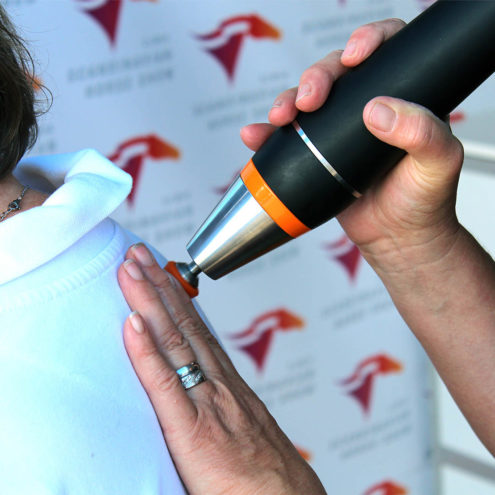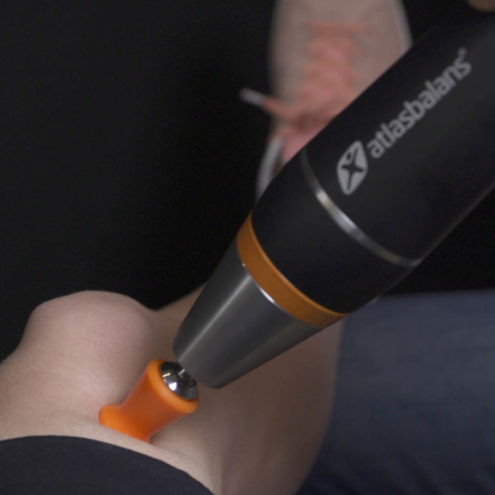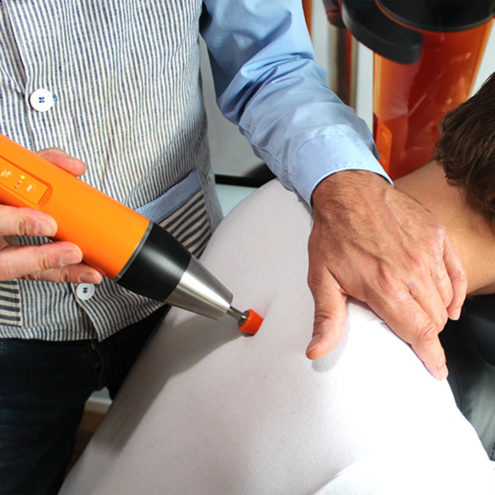The SI joint – A Comprehensive Guide

The SI joint, or sacroiliac joint (articulatio sacroiliaca) , is an incredibly important part of our pelvis. Its role and function is central to our ability to move and perform daily activities. This article provides an in-depth overview of the SI joint, its functions, common problems that occur, and treatment methods and prevention.
What is the SI joint?
Anatomy and Function of the SI Joint
The SI joint is the part where the sacrum of the spine meets the ilium. We have a right and a left SI joint. This joint plays an important role in transferring load and motion between the upper body and the lower limbs. Its robust ligament and muscle structures provide stability and support, which is crucial for our mobility.
The Role of the SI Joint in Body Movements
The SI joint contributes to a range of movements, including bending and stretching, twisting the body, and walking. Its flexibility and strength allow for complex movements, while maintaining stability and minimizing stress on the spine.
Why Do Problems Occur in the SI Joint?
Common Causes of SI Joint Pain
Pain in the SI joint can occur due to a range of causes, such as overload, misalignment, trauma, pregnancy, weak pelvic floor or conditions such as arthritis. Overloading and incorrect movements can lead to inflammation and pain in the ligaments and surrounding muscles of the joint.
Risk factors for SI joint problems
Risk factors include inactivity, poor posture, being overweight, and a history of lower back injuries. Genetic factors can also play a role in the development of problems in the SI joint.
Symptoms of SI joint problems
Common symptoms
Symptoms of SI joint problems include pain in the lower back, hip, groin or thighs. The pain can vary in intensity and often worsens with prolonged sitting or standing.
How SI Joint Problems Affect Daily Life
Experiencing problems in the SI joint can limit mobility and make everyday activities painful. It can affect everything from walking and bending to sitting or sleeping comfortably.
How we can help you
At the FasciaClinics, we focus on identifying and treating the causes of SI joint problems. Through individualized treatment plans, we can offer relief and improve the function of the SI joint. During a fascia treatment, we adjust the entire pelvis so that the loads from the lower and upper body are equalized over the two SI joints.
Diagnosis of SI joint problems
Clinical Tests and Assessments
Diagnosis of SI joint problems is made through a combination of clinical tests, patient history and sometimes imaging methods such as MRI. This includes physical tests to assess the location and nature of the pain.
The Importance of the Right Diagnosis
An accurate diagnosis is essential for effective treatment. It ensures that the right therapies and treatment methods are used to address specific problems in the SI joint.
Treatment methods for SI joint problems
Conservative treatment options
Conservative treatment may include pain relief, anti-inflammatory drugs, and physical therapy. These treatments aim to reduce pain, inflammation and improve the mobility of the SI joints.
Prevention and Self-Care
Preventive measures include ergonomic adjustments in everyday life, regular exercise and strengthening exercises for the back, buttocks and hips. Good posture and weight loss can also help reduce strain on the SI joint.
Lifestyle Changes and Exercises for the SI Joint
Recommended exercises
Specific exercises that focus on strengthening and stabilizing the SI joint can be very effective. These can include core-strengthening exercises, yoga and pilates.
Tips for Ergonomics and Daily Activity
Adjusting seating, sleeping positions, and work environments can help reduce pain and prevent further problems in the SI joint.
When should you seek care for SI joint problems?
Signs of Serious Problems
If you experience intense pain, difficulty moving, or pain that does not improve with self-care, you should seek professional help.
The Benefits of Early Intervention
Early interventions can help prevent chronic problems and deterioration of the condition. By seeking care early, long-term solutions and improved quality of life can be achieved.
SI joint problems can have a significant impact on your life. By understanding the causes and learning about effective treatment options, you can regain control of your health and well-being.
FAQ: SI Joint
Vilka är de vanligaste orsakerna till SI-ledssmärta?
SI-ledssmärta kan uppstå på grund av flera orsaker, inklusive överbelastning, skador, graviditet, svag bäckenbotten och artrit. Snedbelastning och dålig hållning är också vanliga bidragande faktorer.
Hur kan problem i SI-leden påverka dagligt liv?
Problem i SI-leden kan orsaka smärta i nedre delen av ryggen, höften, ljumsken eller låren, vilket kan begränsa rörlighet och göra vardagliga aktiviteter smärtsamma.
Vilka är de vanligaste symtomen på SI-ledsproblem?
De vanligaste symtomen på SI-ledsproblem inkluderar smärta i nedre delen av ryggen, höften, ljumsken eller låren, ofta förvärrad vid långvarigt sittande eller stående.
Vilka behandlingsmetoder finns för SI-ledsproblem?
Behandlingsmetoder för SI-ledsproblem varierar beroende på orsaken, men kan inkludera smärtlindring, antiinflammatoriska läkemedel, fysioterapi, fasciabehandling och ergonomiska justeringar.
När bör man söka vård för SI-ledsproblem?
Professionell vård bör sökas vid intensiv smärta, svårigheter att röra sig, eller smärta som inte förbättras med hemvård. Tidig intervention är viktig för att förhindra kroniska problem.
Hur kan Fasciaklinikerna hjälpa till med SI-ledsproblem?
På Fasciaklinikerna används en helhetssyn på kroppen där fasciabehandling används. Hela bäckenet justeras i en behandling så belastningarna på SI-lederna jämnas ut.
 Search
Search


































